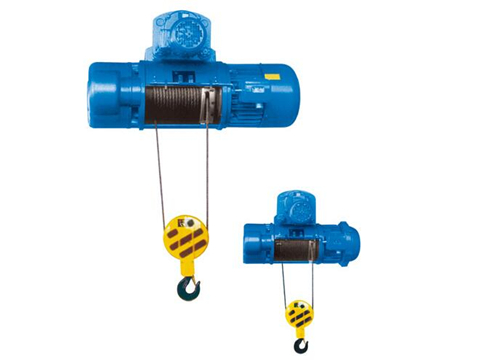Innovative Electric Hoists – Reducing Downtime, Maximizing Output
In today’s fast-paced industrial landscape, the demand for efficiency and productivity is paramount, making innovative electric hoists an essential component for various sectors, including construction, manufacturing, and logistics. Traditional hoisting systems often suffer from limitations such as slow operation speeds, frequent breakdowns, and inadequate load management capabilities, leading to significant downtime and reduced output. However, the advent of advanced electric hoist technology has transformed the way businesses handle heavy lifting, effectively addressing these challenges and optimizing operational performance. One of the key advantages of modern electric hoists is their ability to operate at faster speeds compared to traditional systems. Innovations such as variable frequency drives VFDs enable precise control over the hoist’s movements, allowing for smooth acceleration and deceleration. This not only reduces the time required to lift or lower loads but also enhances safety by minimizing abrupt starts and stops that could lead to accidents or equipment damage. Additionally, electric hoists equipped with intelligent sensors can monitor load weights in real time, ensuring that operators do not exceed safety limits and thereby preventing potential overload incidents.

Another significant benefit of innovative electric hoists is their reduced maintenance requirements. Traditional hoists often necessitate frequent checks and repairs due to wear and tear, resulting in extended downtimes that can disrupt workflows. In contrast, modern electric hoists are designed with durability and longevity in mind. They feature advanced materials and designs that minimize friction and wear, reducing the frequency of maintenance tasks. Moreover, many new models are equipped with diagnostic systems that alert operators to potential issues before they escalate, allowing for proactive maintenance scheduling rather than reactive repairs. Furthermore, the integration of automation and smart technology into electric hoists has revolutionized material handling processes. Automated hoists can be programmed to perform repetitive tasks with high precision, significantly increasing throughput. For instance, in a manufacturing setting, an automated electric hoist can transport materials along an assembly line without the need for constant operator intervention, freeing up personnel to focus on more complex tasks. This not only enhances overall productivity but also contributes to a safer work environment by reducing the risk of human error.
The adaptability of polipasto eléctrico to various environments is another factor that makes them indispensable in modern industry. With options for different lifting capacities, designs, and control systems, these hoists can be tailored to meet specific operational needs, whether it is a small workshop or a large industrial site. This versatility ensures that businesses can maximize output without compromising safety or efficiency. In summary, innovative electric hoists are at the forefront of industrial advancements, providing solutions that reduce downtime and maximize output. Their combination of speed, reliability, low maintenance needs, and integration with automation technology positions them as vital tools for modern operations. As industries continue to evolve, the role of electric hoists in enhancing productivity and safety will only become more pronounced, making them a crucial investment for any business aiming to thrive in a competitive market.